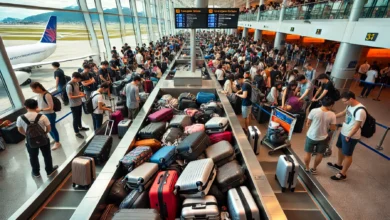The 3 Best Places to Visit in India in December 2025
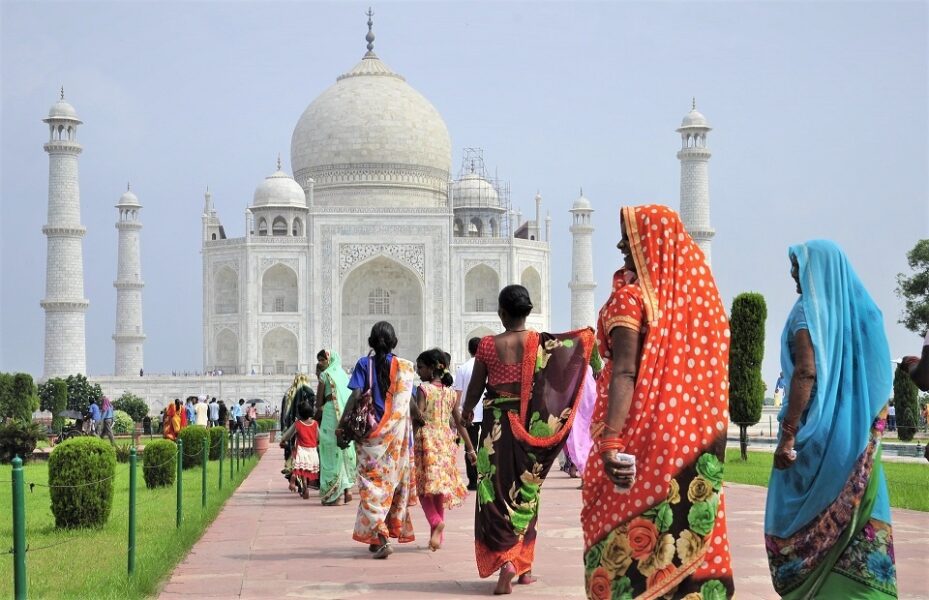
The 3 Best Places to Visit in India in December
When considering the best places to visit in India in December, travelers can choose many stunning destinations that showcase the country’s diverse charm.
December India is when the weather is pleasantly cool, perfect for exploring natural landscapes and cultural landmarks.
The best places to visit in December in India offer a mix of vibrant festivals, breathtaking scenery, and historical treasures.
Whether you seek the warmth of the beaches or the crisp air of the mountains, December in India presents an ideal travel experience.
Discover the magic of India in December and plan your perfect winter getaway.
Is India Worth Visiting?
Absolutely! India uniquely blends cultural richness, historical landmarks, and natural beauty. The pleasant weather during December further enhances the travel experience, making it an excellent time to visit.
Why Should I Visit India? Due to its favorable weather and numerous festivals, December is particularly inviting in India. From the sun-kissed beaches of Goa to the regal palaces of Rajasthan, there are countless reasons to visit during this time.
Visiting India for the First Time: For those visiting India for the first time, December is an ideal month. The cool temperatures and festive atmosphere make it easier to explore the country’s top attractions.
Whether you’re interested in cultural exploration, adventure, or relaxation, places to visit in India in December offer something for every traveler.
Best Time to Travel to India
The best time to travel to India is undoubtedly during the cooler months, with December being particularly favorable. This period offers the most comfortable weather for exploring the diverse landscapes and cultural sites.
Weather: The weather in India in December is generally mild and pleasant. Northern regions experience cooler temperatures, often ranging from 5°C to 20°C, while southern and coastal areas enjoy warmer temperatures, typically between 20°C and 30°C.
This makes December an ideal time for various outdoor activities and sightseeing.
Airfares: December is a popular travel month due to the favorable weather, so booking flights well in advance is advisable.
Airfares can be higher during this peak season, but early planning can help secure better deals. Additionally, the holiday season brings festive events and attractions, adding more value to your travel experience.
Weather in India in December
The weather in India in December is generally mild and pleasant, making it an ideal time for travel. Northern regions experience cooler temperatures ranging from 5°C to 20°C (41°F to 68°F), with hill stations potentially experiencing snowfall.
Southern and coastal areas enjoy warmer temperatures, typically between 20°C and 30°C (68°F to 86°F). This variation allows travelers to choose destinations based on their weather preferences.
India weather in December is marked by clear skies and minimal rainfall, providing perfect conditions for sightseeing and outdoor activities. The reduced humidity and comfortable temperatures across the country enhance the overall travel experience, making it a favored month for tourism.
December weather in India varies by region but is characterized by its pleasantness. In the north, you can enjoy the crisp, cool air, perfect for exploring historical monuments and winter festivities. The warm but comfortable climate in the south is ideal for beach vacations and exploring lush landscapes.
4 Highly Rated Indian Tours
3 Best Places to Visit in India
India has immense beauty and diversity in geography, culture, languages, and cuisine. When exploring the best places to visit in India in December, you’ll find a country rich with history and vibrant attractions.
Home to 38 UNESCO World Heritage Sites, India offers a seemingly endless array of must-see destinations. Here are three great places to visit in India in December.
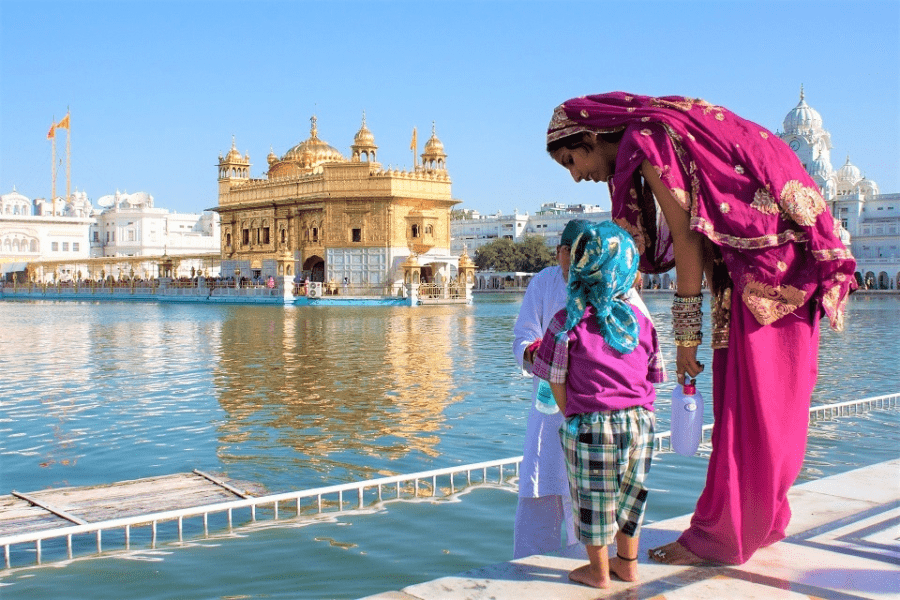
1. Sri Harmandir Sahib: The Golden Temple, Amritsar
History and Significance The Golden Temple, also known as Darbar Sahib or “Abode of God,” is located in Amritsar, Punjab. It is the holiest shrine in Sikhism and a pilgrimage site that attracts faith followers and tourists worldwide.
Founded in the late 16th century by Guru Ram Das, the temple has been a cultural center and faced numerous historical conflicts. Maharaja Ranjit Singh gilded the temple with gold in the early 19th century, giving it its iconic appearance.
How to Get There Amritsar is well-connected by national highways, making booking a ride to the Golden Temple easy. You can also reach Amritsar railway station from most metropolitan cities and take a bus or taxi for a budget-friendly ride.
Safety Amritsar is one of the safest tourist destinations in India. The city’s crime statistics are significantly lower than those of major metropolitan areas, making it a secure place for solo travelers and families. However, as with any travel destination, it is wise to stay cautious.

Why You Should Visit The Golden Temple: The temple’s stunning marble architecture, large man-made Sarovar (pool), and calming spiritual atmosphere are awe-inspiring.
The temple’s “langar” (community kitchen) serves free meals to around 50,000 people daily, doubling during holidays or religious occasions. This humbling experience is a highlight for visitors.
What to Eat Try the ‘prasad’ from ‘langar’ and local specialties like ‘Kulchas’, a type of maida bread baked in a tandoor, along with various kebabs and tikkas such as ‘Shammi Kabab’ and ‘Mutton Tikka’.

Nearby Attractions Other attractions in Amritsar include the Partition Museum, Khalsa College, and the Wagah Border. After sightseeing, treat yourself to the city’s delicious local cuisine.
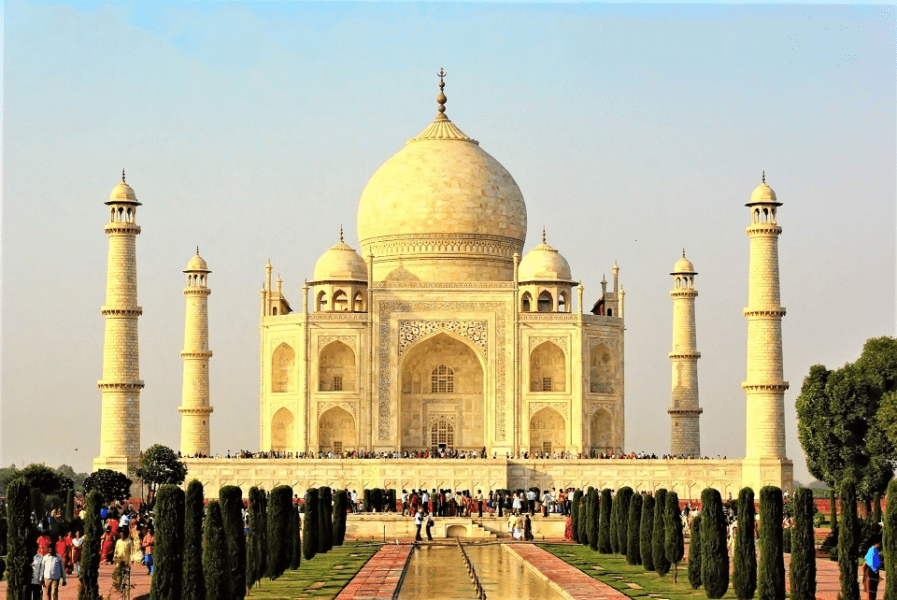
2. The Taj Mahal, Agra
History and Significance The Taj Mahal, located in Agra, Uttar Pradesh, is one of the most iconic monuments in the world. Built by Mughal Emperor Shah Jahan in the early 17th century as a mausoleum for his beloved wife Mumtaz Mahal, it took 20,000 artisans approximately 20 years to complete.
This UNESCO World Heritage Site is a testament to Mughal architecture and India’s rich history.
How to Get There The Taj Mahal is near the Yamuna River in Agra, a 4-hour drive from Delhi. It is easily accessible by car, bus, or train from major cities.
Safety The Taj Mahal is one of the most visited sites in India, and stringent security measures are in place. Visitors and their bags are screened before entry. Be mindful of pickpockets and avoid purchasing high-priced souvenirs from street vendors.

Why You Should Visit The architectural beauty and intricate marble inlay work are breathtaking. A local guide can enhance your visit by bringing the history and stories of the Taj Mahal to life.
What to Eat Agra’s street food is renowned for offering rich, creamy, and boldly flavored dishes like slow-cooked meat, stuffed parathas, and chickpea curry. Don’t miss the famous Petha, a sweet made from white pumpkin.
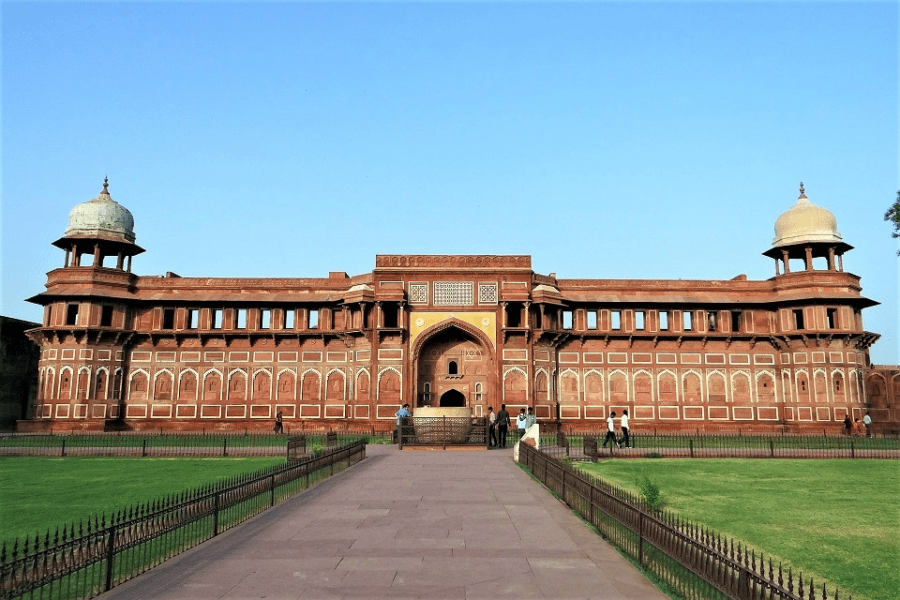
Nearby Attractions Besides the Taj Mahal, Agra is home to the Agra Fort and Fatehpur Sikri, both UNESCO World Heritage Sites. If visiting in February, don’t miss the Taj Mahotsav, a 10-day festival showcasing Indian art and crafts.
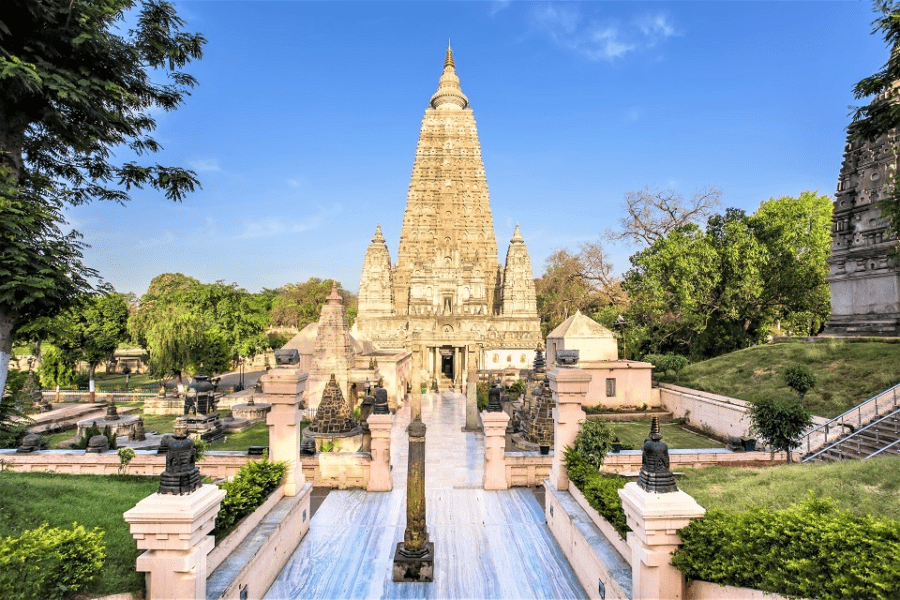
3. Mahabodhi Temple, Bodh Gaya
History and Significance The Mahabodhi Temple in Bodh Gaya, Bihar, is a significant religious and cultural site. It marks where Lord Buddha attained enlightenment in the early 3rd century BCE.
Built by King Ashoka, the temple complex includes the 164-foot-tall Vajrasana (diamond throne) and the sacred Bodhi tree.
How to Get There Bodh Gaya is four miles from Gaya and about six miles from Gaya Railway Station. The Gaya Airport is also nearby. Local cabs or rented cars are convenient for the final stretch of your journey.
Safety Bodh Gaya is a serene and sacred destination with low crime rates. It is extremely safe for tourists but always respects local culture and religious practices.
Why You Should Visit The temple complex includes the Vajrasana, the main temple, and seven other structures marking Buddha’s meditation spots. The spiritual ambiance and historical significance make it a profound destination.
What to Eat Bodh Gaya offers a variety of dining options, including the Sujata Restaurant and Tibetan Om Cafe, serving Indian, Chinese, and continental dishes.
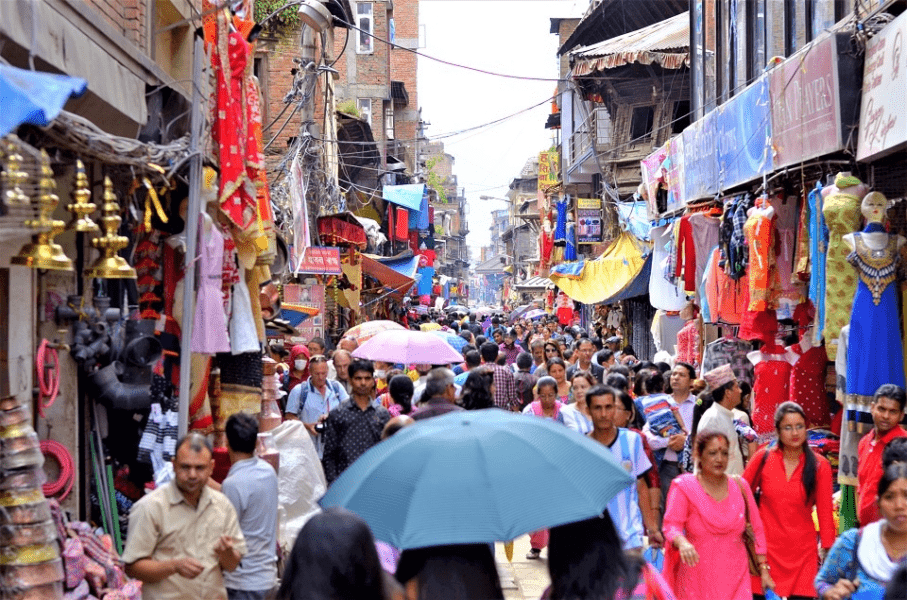
Kundan Bazaar For local handicrafts and books, visit Kundan Bazaar and the Tibetan Refugee Market in Bodh Gaya. These markets offer a variety of traditional Indian winterwear, handmade crafts, and unique souvenirs.
You and your family can explore various products, from warm woolen garments to intricately crafted items, providing an authentic shopping experience.
Nearby Attractions Enhance your spiritual experience by visiting the Thai Monastery, Royal Bhutan Monastery, and other Buddhist temples showcasing different Asian architectural styles. Also, see the tallest Buddha statue in India, just half a mile from the city center.
Exploring the best places to visit in India in December
Exploring the best places to visit in India in December offers a perfect blend of pleasant weather and rich historical experiences. Whether you marvel at the Golden Temple in Amritsar, the Taj Mahal in Agra, or the Mahabodhi Temple in Bodh Gaya, each destination tells a unique story of India’s heritage.
Pack your bags and prepare for an unforgettable journey through India’s historical and cultural wonders.
4 Best Value Indian Tours – Rated 5 Stars!
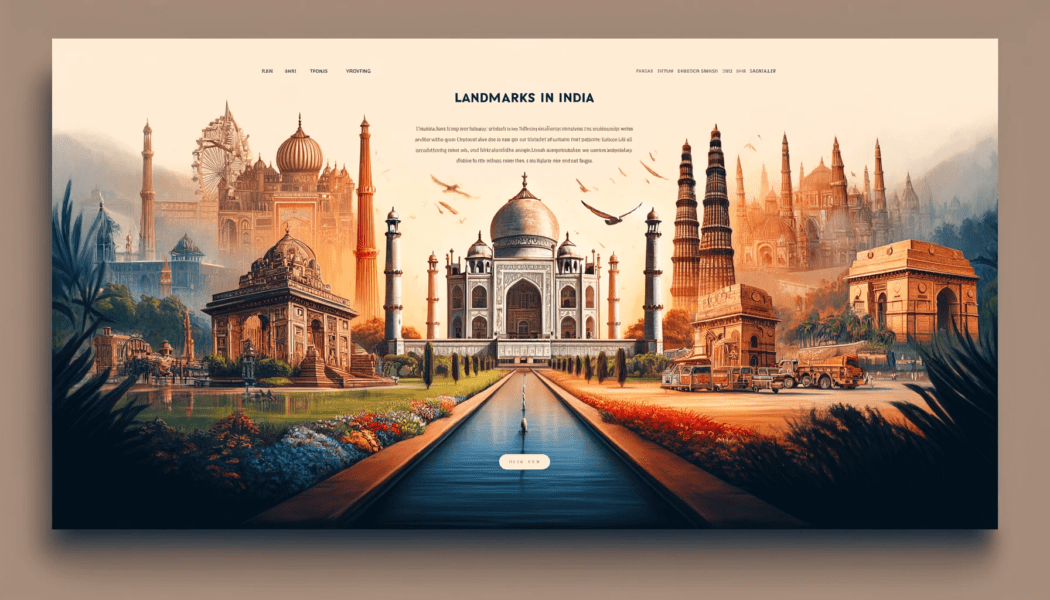
Top 20 Landmarks of India
India has many landmarks showcasing its rich cultural heritage and historical significance. Here are some of the most famous landmarks in India, each offering a unique glimpse into the country’s diverse past and vibrant present.
1. Taj Mahal
The Taj Mahal is perhaps the most iconic India landmark. Located in Agra, this white marble mausoleum was built by Emperor Shah Jahan in memory of his beloved wife, Mumtaz Mahal. It is one of the most famous landmarks of India, known for its stunning architecture and romantic history.
2. Red Fort
The Red Fort in Delhi is a famous landmark in India, symbolizing the might of the Mughal Empire. Built-in the 17th century by Emperor Shah Jahan, this majestic fort is a testament to India’s rich history and architectural prowess.
3. Qutub Minar
Another notable India landmark is the Qutub Minar, the tallest brick minaret in the world. Located in Delhi, this UNESCO World Heritage Site is a famous landmark in India, attracting tourists with its intricate carvings and historical significance.
4. India Gate
The India Gate in New Delhi is a prominent landmark in India, dedicated to the soldiers who lost their lives in World War I. This imposing structure is a popular spot for locals and tourists, offering a picturesque view and a sense of national pride.
5. Gateway of India
The Gateway of India in Mumbai is one of the most famous landmarks in India. Built to commemorate the visit of King George V and Queen Mary, this grand archway is a symbol of India’s colonial past and its bustling present.
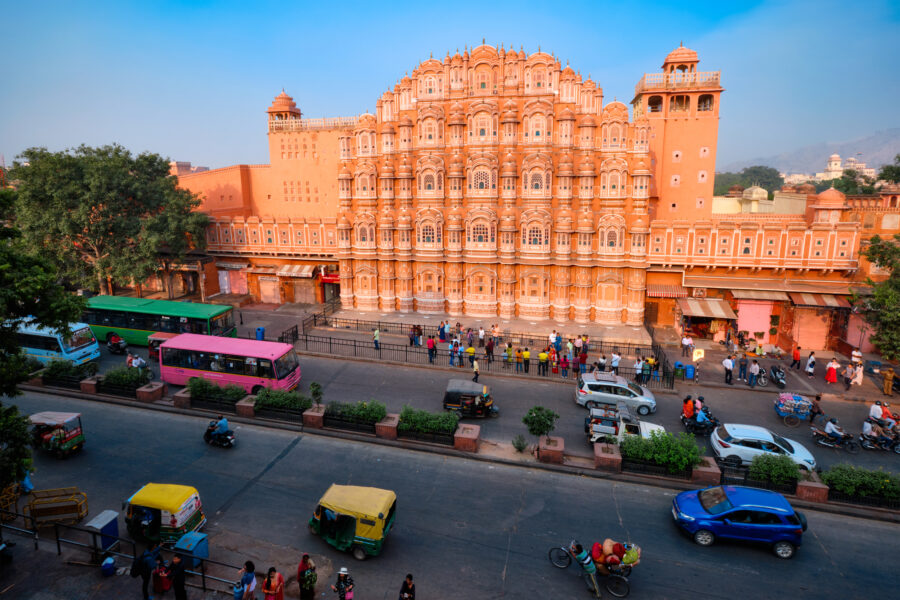
6. Hawa Mahal
Hawa Mahal, or the “Palace of Winds,” is a unique landmark in India in Jaipur. This pink sandstone structure is known for its intricate latticework and numerous windows, designed to allow royal ladies to observe street festivities unseen.
7. Amer Fort
Situated in Jaipur, Amer Fort is a famous landmark of India, renowned for its artistic Hindu-style elements. The fort’s majestic ramparts, palaces, and temples make it a must-visit Indian landmark.
8. Mysore Palace
Mysore Palace, in Karnataka, is one of India’s famous landmarks. This opulent palace is known for its grand architecture and vibrant Dussehra celebrations, drawing thousands of visitors annually.
9. Charminar
The Charminar in Hyderabad is a famous landmark in India, recognized for its four grand arches and minarets. It serves as a historical symbol and a major attraction in the city.
10. Meenakshi Temple
Located in Madurai, the Meenakshi Temple is a landmark of India that showcases Dravidian architecture. This ancient temple is dedicated to Goddess Meenakshi and Lord Sundareswarar, making it a significant pilgrimage site.
11. Ajanta and Ellora Caves
The Ajanta and Ellora Caves in Maharashtra are famous landmarks of India, known for their ancient rock-cut temples and intricate sculptures. These UNESCO World Heritage Sites highlight ancient India’s artistic and cultural heritage.

12. Victoria Memorial
The Victoria Memorial in Kolkata is a notable India landmark, built in memory of Queen Victoria. This grand marble building houses a museum and offers a glimpse into India’s colonial history.
13. Konark Sun Temple
The Konark Sun Temple in Odisha is one of the most famous landmarks in India, renowned for its stunning architecture and intricate carvings depicting various aspects of life. This 13th-century temple is shaped like a giant chariot and is a UNESCO World Heritage Site.
14. Sanchi Stupa
The Sanchi Stupa in Madhya Pradesh is an ancient landmark in India, built by Emperor Ashoka in the 3rd century BCE. This Buddhist complex is a significant site for pilgrims and historians alike.
15. Rani ki Vav
Rani ki Vav in Gujarat is a famous landmark of India, known for its stepwell architecture. This UNESCO World Heritage Site is intricately carved and showcases the brilliance of ancient Indian engineering.
16. Harmandir Sahib (Golden Temple)
The Golden Temple in Amritsar is one of the most revered Indian landmarks. This sacred Sikh shrine is famous for its stunning golden architecture and serene ambiance, attracting millions of visitors annually.
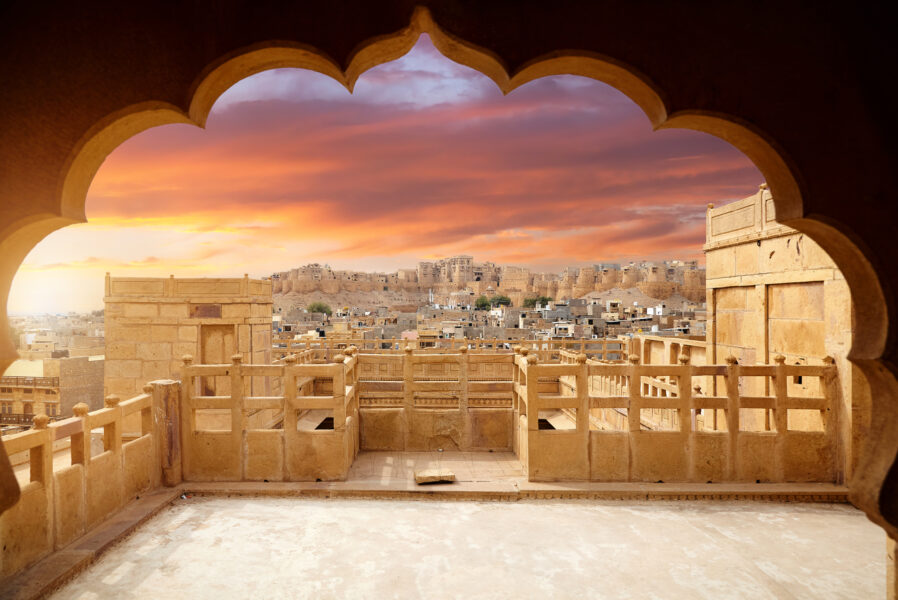
17. Jaisalmer Fort
Jaisalmer Fort, located in Rajasthan, is a notable India landmark. This “Golden Fort” is made of yellow sandstone and stands majestically in the Thar Desert, offering a glimpse into medieval Indian architecture.
18. Khajuraho Temples
The Khajuraho Temples in Madhya Pradesh are famous landmarks of India, renowned for their erotic sculptures and intricate carvings. These UNESCO World Heritage Sites reflect the rich cultural and artistic heritage of ancient India.
19. Chhatrapati Shivaji Terminus
Chhatrapati Shivaji Terminus in Mumbai is a significant landmark in India, known for its Victorian Gothic architecture. This bustling railway station is also a UNESCO World Heritage Site, symbolizing the blend of Indian and British architectural styles.
20. Brihadeeswarar Temple
Brihadeeswarar Temple in Tamil Nadu is a famous landmark in India that exemplifies Dravidian architecture. This 11th-century temple is dedicated to Lord Shiva and is part of the Great Living Chola Temples.
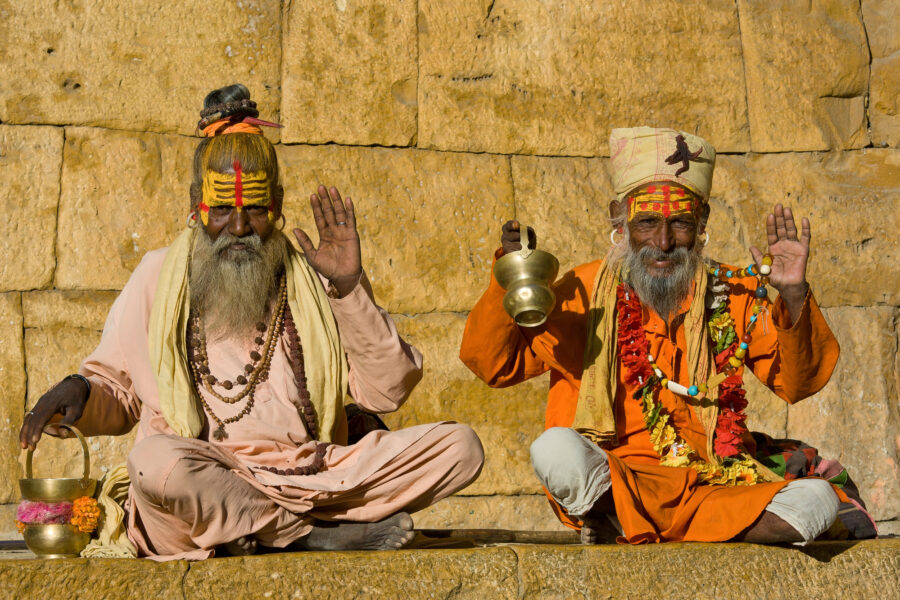
5 Best Cities in India to Visit
When exploring the best cities in India to visit, travelers encounter a diverse array of cultural, historical, and scenic experiences.
Here are five of the best cities to visit in India, each offering unique attractions and a rich cultural heritage.
1. Delhi
Delhi, the capital city, is a dynamic blend of the old and new. Rich in history, it boasts landmarks like the Red Fort, Qutub Minar, and India Gate. The bustling markets of Chandni Chowk and the modern attractions of Connaught Place highlight the city’s diversity.
Delhi’s cultural tapestry is reflected in its museums, art galleries, and theaters, making it a hub of historical and contemporary experiences.
2. Mumbai
Mumbai, known as the “City of Dreams,” is India’s financial capital. This vibrant city is famous for the Gateway of India, Marine Drive, and the historic Chhatrapati Shivaji Terminus. As the heart of Bollywood, Mumbai offers a peek into India’s film industry.
The city’s nightlife, street food, and bustling markets, such as Colaba Causeway and Crawford Market, make it one of the best cities to visit in India.
3. Jaipur
Jaipur, the “Pink City,” is renowned for its royal heritage and stunning architecture. Rajasthan’s capital features majestic landmarks like the Amer Fort, Hawa Mahal, and City Palace. Jaipur’s vibrant bazaars, such as Johari Bazaar and Bapu Bazaar, are perfect for shopping traditional crafts.
The city’s cultural richness is celebrated through its numerous festivals and traditional cuisine, making it a must-visit destination.
4. Bangalore
Bangalore, known as the “Silicon Valley of India,” is famous for its booming IT industry and pleasant climate. The Lalbagh Botanical Garden, Bangalore Palace, and the vibrant MG Road are key attractions. Its diverse culinary scene and lively pubs reflect the city’s cosmopolitan nature. Bangalore’s blend of modernity and tradition, along with its green spaces, makes it one of the best cities to visit in India.
5. Varanasi
Varanasi, one of the oldest continuously inhabited cities in the world, is a spiritual hub. Located on the banks of the Ganges River, it is known for its ghats, where pilgrims perform rituals and ceremonies. The Kashi Vishwanath Temple, Sarnath, and the evening Ganga Aarti are significant attractions.
Varanasi’s spiritual ambiance, combined with its historical significance, provides a profound experience for visitors.
Each of these cities showcases a unique facet of India’s rich cultural and historical landscape, making them some of the best cities to visit in India.
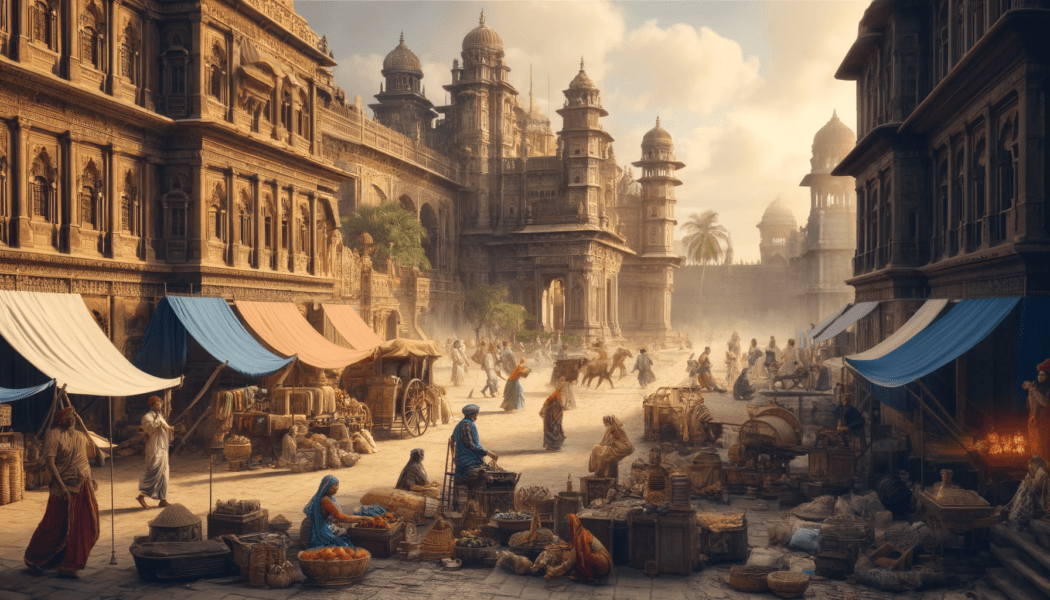
A Brief History of India
India’s history is a rich tapestry of ancient civilizations, mighty empires, cultural renaissance, colonial struggle, and modern development.
When considering the best places to visit in India in December, you’ll find that these destinations offer pleasant weather and a deep dive into the fascinating history that has shaped this diverse nation. Here’s an overview of India’s history, highlighting key eras and significant historical landmarks.
Ancient Civilizations: The Dawn of India
Indus Valley Civilization (c. 3300 – 1300 BCE) The Indus Valley Civilization, one of the world’s earliest urban cultures, flourished along the Indus River. Advanced urban planning, drainage systems, and trade networks marked sites like Harappa and Mohenjo-Daro (now in Pakistan). In India, the ancient city of Lothal in Gujarat offers a glimpse into this civilization’s ingenuity and trade prowess.
Varanasi is one of the best places to visit in India in December. It is among the oldest continuously inhabited cities globally. Situated on the banks of the Ganges, it has been a spiritual hub for Hindus for thousands of years. In December, the cool weather enhances the experience of its ancient temples and sacred rituals.
The Vedic and Epic Ages (c. 1500 – 500 BCE)
Vedic Civilization Following the Indus Valley Civilization, the Vedic Age saw the composition of the Vedas, which form the basis of Hindu philosophy and rituals. This period laid the foundation for Hinduism and introduced the caste system.
Mahabharata and Ramayana The epic tales of Mahabharata and Ramayana were composed during this time, reflecting the societal values, traditions, and struggles of ancient India. While there are no specific sites from these epics, the stories are integral to the cultural fabric of India.
The Golden Age: Maurya and Gupta Empires
Maurya Empire (c. 322 – 185 BCE) The Maurya Empire, founded by Chandragupta Maurya, reached its zenith under Emperor Ashoka. Pataliputra (modern-day Patna) was the capital. Ashoka’s rule saw the spread of Buddhism, and his edicts can be found across India, with the Ashoka Pillar in Sarnath being a notable site.
Gupta Empire (c. 320 – 550 CE) The Gupta period is often called the Golden Age of India due to significant advancements in science, mathematics, astronomy, literature, and art. Nalanda in Bihar was a major learning center during this era, and visiting in December is ideal for exploring its extensive ruins.
Medieval India: The Rise of Dynasties
Delhi Sultanate (c. 1206 – 1526 CE) The Delhi Sultanate saw the establishment of Muslim rule in India. Qutub Minar, built during this period, is a UNESCO World Heritage Site in Delhi. The cool December weather makes it a perfect time to explore this towering minaret and other historical structures in the city.
Mughal Empire (c. 1526 – 1857 CE) The Mughal era left an indelible mark on Indian architecture, culture, and cuisine. Agra’s Taj Mahal, built by Emperor Shah Jahan, is one of the most famous landmarks from this period. Visiting the Taj Mahal in December offers a more comfortable experience without the intense heat of summer.
Jaipur Rajasthan’s capital, Jaipur, known as the “Pink City,” is renowned for its palaces and forts, such as Amer Fort and Hawa Mahal. December’s mild climate is perfect for exploring these royal residences and bustling markets.
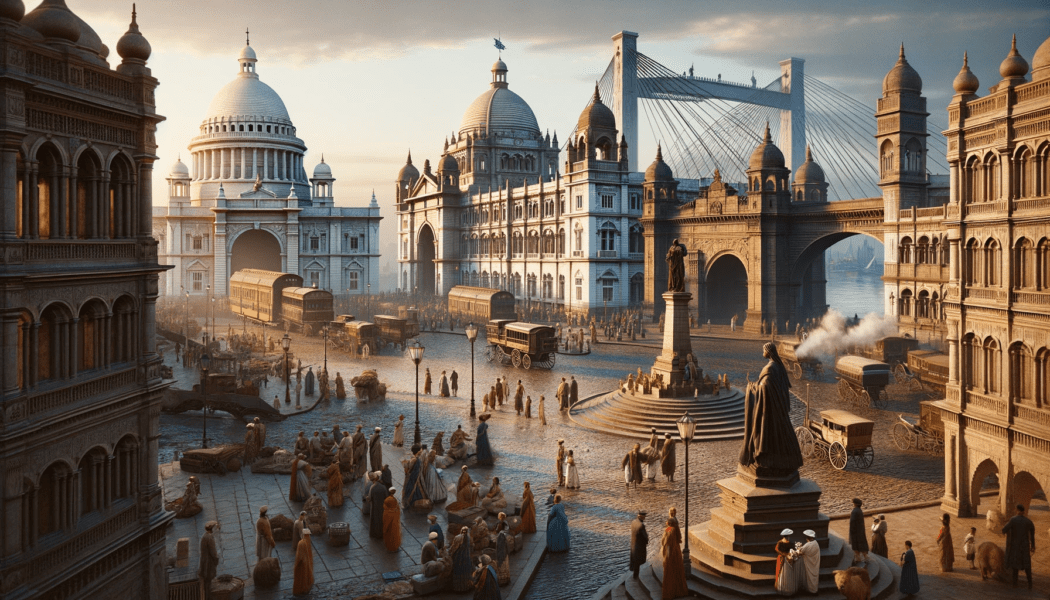
Colonial India: The British Raj
British East India Company (c. 1757 – 1858 CE) The British East India Company’s influence expanded following the Battle of Plassey in 1757. Kolkata, then Calcutta, became the capital of British India. The Victoria Memorial, Howrah Bridge, and colonial architecture reflect this era and are best enjoyed in December when the weather is cooler.
British Crown Rule (c. 1858 – 1947 CE) Post-1858, India came directly under British Crown rule. Mumbai, with its Gateway of India and Chhatrapati Shivaji Terminus, symbolizes the grandeur of colonial architecture. The pleasant December climate makes sightseeing in Mumbai enjoyable.
Modern India: Post-Independence Era
Independence and Republic (1947—Present) India gained independence on August 15, 1947, and became a republic on January 26, 1950. New Delhi, the capital, houses important political landmarks like Rashtrapati Bhavan, India Gate, and Parliament House. December’s cool weather is ideal for visiting these sites.
Hyderabad Hyderabad seamlessly blends its historical past with modern growth. The Charminar and Golconda Fort are testaments to its rich history, while the city’s IT hubs reflect its modern development. Visiting in December offers comfortable weather for exploring both the old and new.
Walk Through the Annals of Indian History
Exploring the best places to visit in India in December offers a comfortable travel experience and a chance to walk through the annals of Indian history. Each city and monument tells a unique story from ancient civilizations and empires to colonial and modern eras.
Whether you are wandering through the sacred ghats of Varanasi, marveling at the forts of Rajasthan, or strolling through colonial-era Kolkata, December is the perfect time to experience India’s historical richness. Pack your bags, grab your travel guide, and get ready to uncover the fascinating history of one of the world’s most captivating countries.
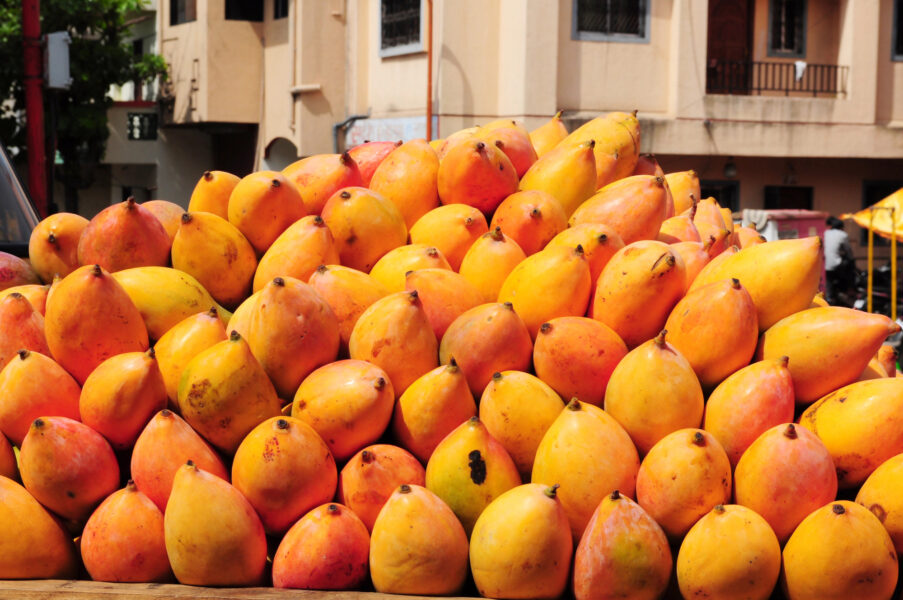
Visiting India FAQ’s
What is the national fruit of India? The national fruit of India is the mango. When considering places to visit in India in December, you may not find fresh mangoes, but you can still enjoy mango-based products and learn about their cultural significance.
Are bathrooms in India different from those in the West? Yes, bathrooms in India can vary. Many public restrooms have squat toilets, though Western-style toilets are common in hotels and urban areas. When visiting places to visit in India in December, it’s helpful to carry toilet paper and hand sanitizer.
Can I drive in India with a US license? You can drive in India with a US license, but obtaining an International Driving Permit (IDP) is advisable. Due to the challenging driving conditions, consider hiring a driver when exploring places to visit in India in December.
Why was India called the jewel in the crown? India was called the “jewel in the crown” due to its immense wealth and resources during British rule. While visiting places to visit in India in December, you can explore historic sites that reflect this rich colonial history.
What is the new capital of India? The capital of India remains New Delhi. When exploring places to visit in India in December, New Delhi’s blend of modern and historical attractions makes it a must-visit destination.
What are some famous handicrafts in India? India is known for its diverse handicrafts, including pottery, textiles, jewelry, and woodwork. When visiting places to visit in India in December, explore local markets to find unique handmade souvenirs.
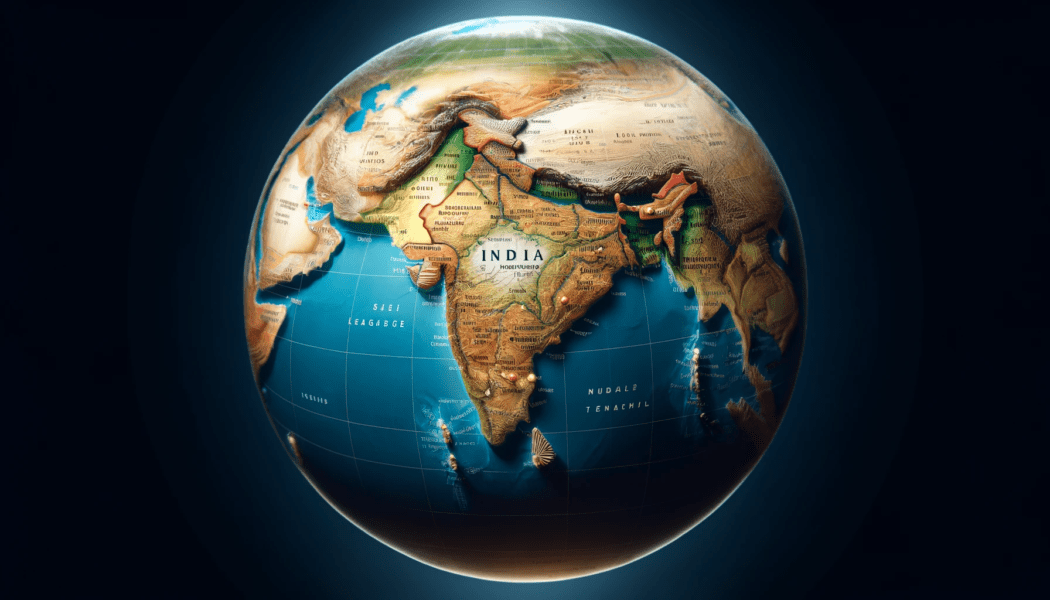
How big is India compared to Texas? India is about five times larger than Texas. When planning places to visit in India in December, consider the country’s vast distances and diverse landscapes.
Why is India called a subcontinent? India is called a subcontinent due to its distinct geographical and cultural identity within Asia. When visiting places to visit in India in December, you’ll experience a variety of climates, cultures, and terrains.
What are trains like inside in India? India’s trains vary from luxurious to basic. When traveling to places to visit in India in December, you might consider higher-class compartments for comfort and safety, especially on long journeys.
Are there castles in India? Yes, India has many forts and palaces that resemble castles, such as those in Rajasthan. When exploring places to visit in India in December, these historic structures offer a glimpse into India’s royal past.
What is the best time to travel to India? The best time to travel to India is during the cooler months, from October to March. December, in particular, offers pleasant weather, making it ideal for exploring places to visit in India in December.
India in General
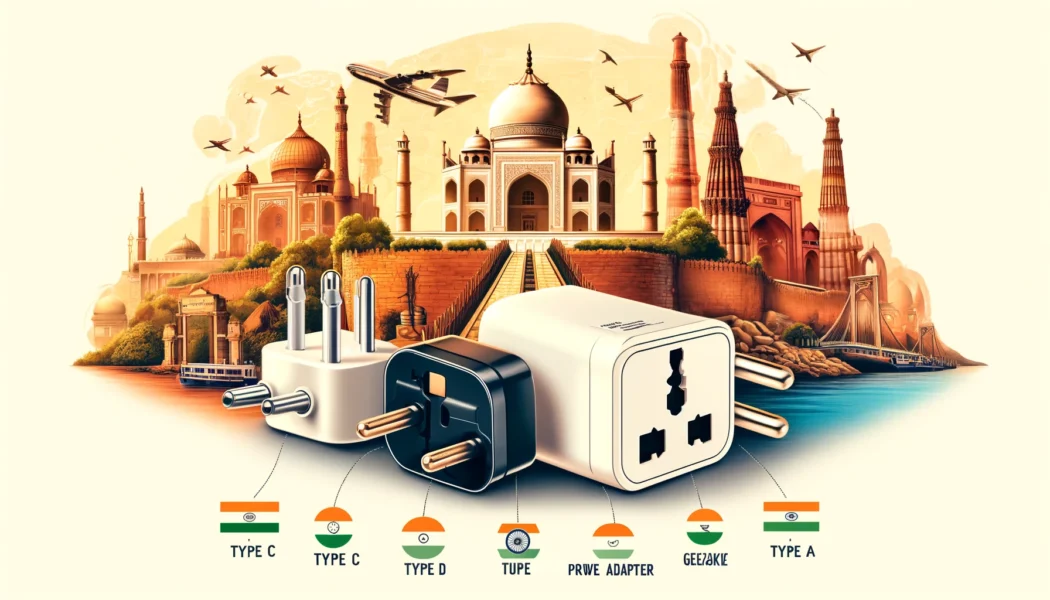
Power Adapter for India
When exploring the best cities in India to visit, it’s crucial to ensure you have the right travel accessories, including an India adapter.
Understanding the power requirements is essential to keep your devices charged and ready as you plan your journey through these diverse and vibrant destinations.
Understanding the India Travel Adapter
India uses a mix of electrical outlets, primarily type C, D, and M. Type D is the most commonly used adapter in all visitor areas.
The standard voltage is 230V with a frequency of 50Hz. Therefore, a power adapter for India is necessary to fit the plug types. Having an adapter for India will ensure your electronics function properly when traveling to the best cities in India to visit.
Types of Adapters for India
- Type C: Known as the Europlug, it has two round pins. Many European travelers will already have this adapter.
- Type D: This has three round pins in a triangular pattern and is unique to India and a few other countries.
- Type M: Similar to Type D but with larger pins, often used for heavy appliances.
When selecting an India travel adapter, ensure it supports these plug types.
Why You Need a Power Adapter for India
Using a power adapter for India ensures your devices can connect to local power outlets without any issues.
Whether you’re visiting historical sites in Delhi, the bustling markets of Mumbai, the pink palaces of Jaipur, the tech hubs of Bangalore, or the spiritual ghats of Varanasi, staying connected is vital.
Power Voltages in the U.S. and India
U.S. Power Voltage:
- Voltage: 120V
- Frequency: 60Hz
- Plug Types: A and B (two flat parallel pins, and sometimes a third round grounding pin)
India Power Voltage:
- Voltage: 230V
- Frequency: 50Hz
- Plug Types: C, D, and M
- Type C: Known as the Europlug, it has two round pins.
- Type D: This has three round pins in a triangular pattern, unique to India and a few other countries.
- Type M: Similar to Type D but with larger pins, often used for heavy appliances.
Using a Voltage Converter
You may need a voltage converter to use your American devices safely in India. A voltage converter converts the 230V Indian power supply to the 120V U.S. devices require. It’s especially important for devices that do not support dual voltage.
Check Your Appliances
Before you travel, check the voltage ratings on your appliances. Many modern electronic devices, such as laptops, cameras, and phone chargers, support dual voltage (110-240V) and only need a plug adapter.
However, some devices like hair dryers or electric razors may not support dual voltage and will require a voltage converter.
Essential Travel Accessories
- Power Adapter: Ensure it supports Type C, D, and M plugs.
- Voltage Converter: Necessary for single-voltage appliances to convert 230V to 120V.
When planning places to visit in India in December, it’s crucial to bring a compatible power adapter and, if necessary, a voltage converter.
This will ensure your devices can be charged and used without any problems. Having the right travel accessories can make your journey smoother and more enjoyable.
So, pack your bags, grab your power adapter and voltage converter, and get ready to explore the best places in India!
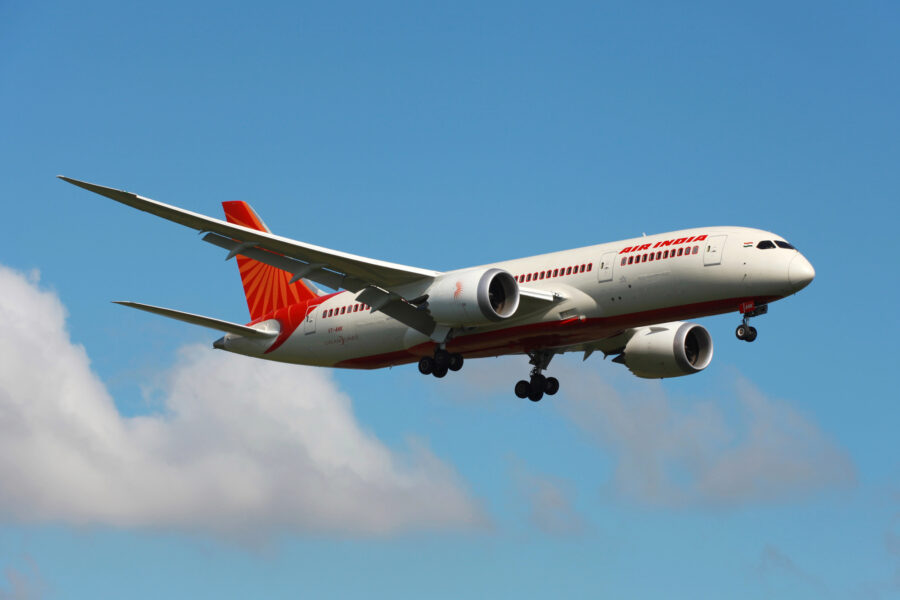
Flights and Airport Information
Are you planning a trip to explore the best places to visit in India in December? Here’s some essential information on flights to India from various U.S. airports and the localized conditions you can expect upon arrival.
Air India Boston, Boston to India Flight
Flights from Boston to India are available with Air India, among other carriers. Air India offers direct flights from Boston to Delhi, making it convenient for travelers. Logan International Airport in Boston has amenities like dining, shopping, and lounges.
Upon arriving in Delhi, Indira Gandhi International Airport is modern and efficient. It offers easy access to the city and connecting flights to other destinations.
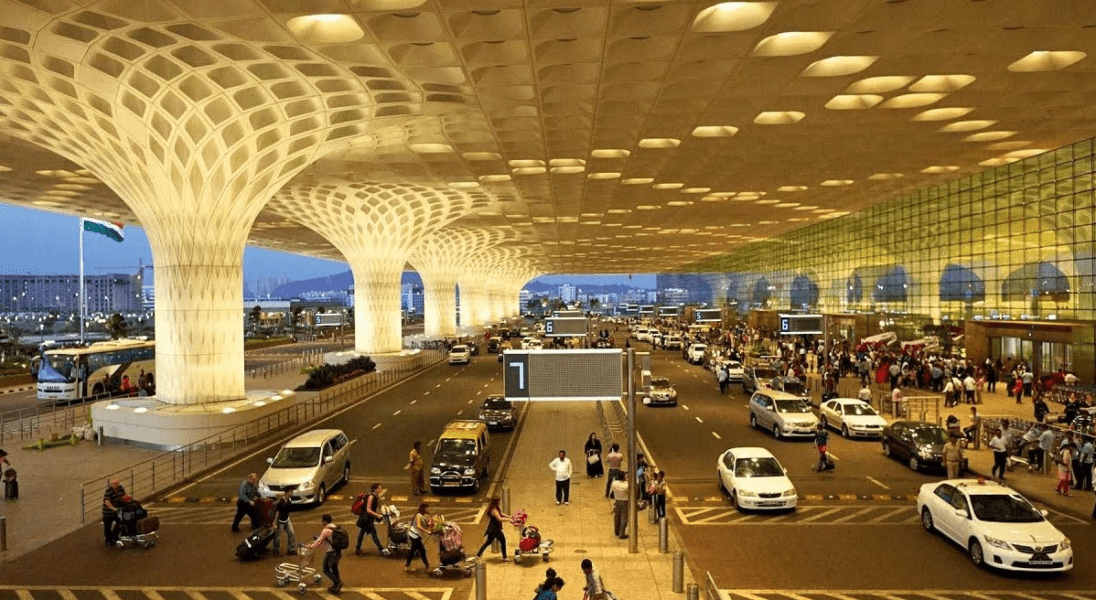
New York to India, Air India Newark to Mumbai
Travelers from New York can catch flights to India from JFK and Newark Liberty International Airports. Air India operates direct flights from Newark to Mumbai.
Newark Airport offers various services, including duty-free shopping, restaurants, and lounges. Chhatrapati Shivaji Maharaj International Airport in Mumbai is one of India’s busiest, featuring extensive facilities and easy transport links to the city.
Dallas to India, Air India Dallas, Dallas to India Flight
Dallas-Fort Worth International Airport offers several flights to India, with Air India serving major cities like Delhi and Mumbai.
The airport features numerous amenities, including dining options, shopping, and lounges. Upon arriving in India, expect well-organized airports with various services to facilitate your onward journey.
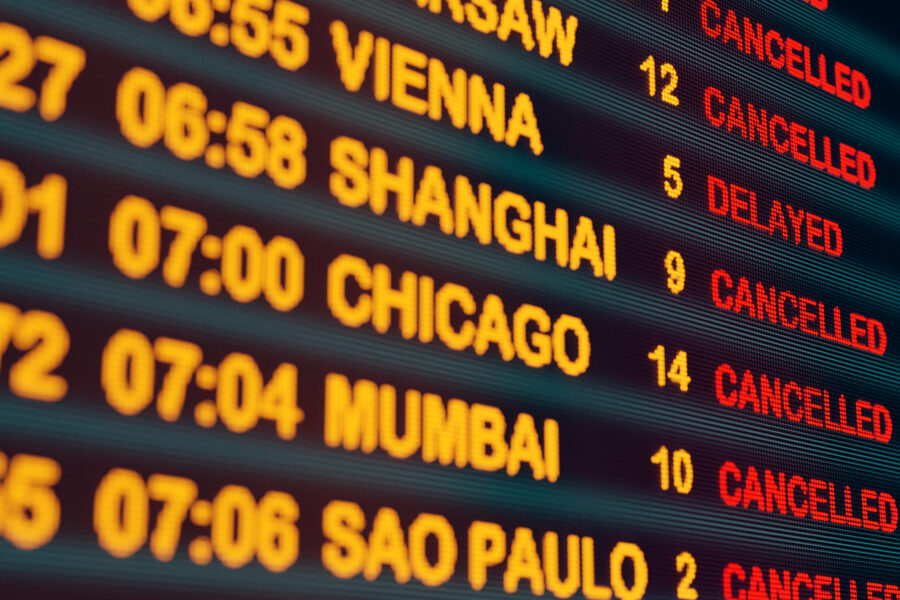
Atlanta to India
Travelers from Atlanta can find flights to India with major carriers, including Delta and Air India, typically with one or more layovers. Hartsfield-Jackson Atlanta International Airport is one of the busiest in the world, offering a wide range of services and amenities.
Upon arrival in India, you’ll be greeted by modern airports equipped with all necessary traveler services.
SFO to India Flights, SFO to Bangalore Air India, SFO to Delhi Air India Ticket Price, Flights from SFO to India
San Francisco International Airport (SFO) offers numerous flights to India. Air India operates direct flights from SFO to Bangalore and Delhi. SFO is known for its excellent facilities, including dining, shopping, and lounges.
Check Air India’s website for the latest ticket prices. Indian airports, such as Kempegowda International Airport in Bangalore and Indira Gandhi International Airport in Delhi, provide a smooth transition with comprehensive passenger services.
Air India Seattle to Delhi
Air India offers flights from Seattle to Delhi, a convenient route for travelers from the Pacific Northwest. Seattle-Tacoma International Airport (Sea-Tac) provides various amenities, including dining, shopping, and relaxation areas.
Upon arriving in Delhi, the airport offers easy access to the city and connecting flights to other Indian destinations.

Localized Conditions at Indian Airports
Indian airports have seen significant modernization and have facilities to handle international travelers efficiently. Common amenities include:
- Immigration and Customs: Well-organized and efficient, though queues can be long during peak times.
- Transportation: Options include pre-paid taxis, app-based cabs, metro services (in major cities like Delhi), and airport shuttles.
- Connectivity: Free Wi-Fi services, although registration may be required.
- Dining and Shopping: A wide range of dining options, including local and international cuisines and duty-free shopping.
Enjoy Your Flight to India
Whether you’re flying from Boston, New York, Dallas, Atlanta, San Francisco, or Seattle, the best places to visit in India in December are easily accessible.
India’s airports are equipped with modern amenities and efficient services to ensure a smooth travel experience. Prepare for your trip by checking the latest flight schedules and ticket prices, and enjoy your journey through India’s rich historical and cultural landscapes.
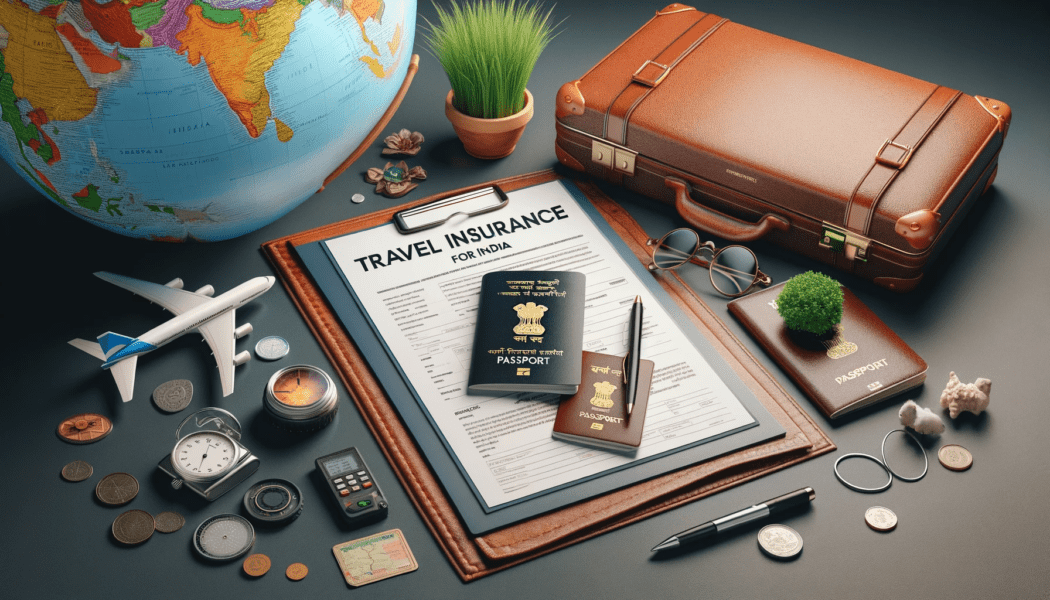
Travel Insurance for India
When exploring the best places to visit in India in December, having travel insurance is essential.
It covers medical emergencies, trip cancellations, lost luggage, and other unforeseen incidents.
Given India’s diverse conditions and health systems, travel insurance ensures peace of mind and financial protection, making your trip safer and more enjoyable.

Sandra mixes her travel know-how with her passion for books, gaining deep insights into different cultures and people. Her global adventures add a personal touch to her reviews, making them relatable in areas like travel, relationships, and personal growth.




![How to Use Apple AirTags as Luggage Tracking Tags - [year] Update](https://theflightguy.com/wp-content/uploads/2024/06/image-140-390x220.png)

